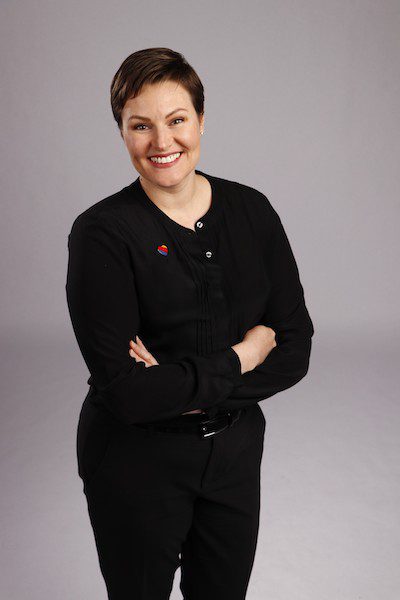
Stacy Malphurs, Vice President of Supply Chain Management & Environmental Sustainability for Southwest Airlines, discussed the airline’s efforts to achieve carbon neutrality during a recent interview with Avionics International.
Southwest Airlines recently invested in a technology development project for commercialization of sustainable aviation fuel. The project is led by SAFFiRE Renewables, a new company that is exploring technology for converting waste biomass into low-cost renewable ethanol. The Department of Energy (DOE) is supporting this project, which has the potential to reduce carbon intensity by 84% in comparison with conventional jet fuel. Southwest has matched the grant from the DOE to support SAFFiRE in converting a waste feedstock called corn stover into ethanol that can then be upgraded into sustainable aviation fuel.
The Vice President of Supply Chain Management & Environmental Sustainability for Southwest Airlines, Stacy Malphurs, discussed Southwest’s efforts to achieve carbon neutrality in an interview with Avionics International. The airline has already started flying with sustainable aviation fuel, or SAF: “We have small amounts of SAF that are flying out of Northern California,” she shared. The SAF is blended with conventional jet fuel for these flights. SAF is molecularly the same as conventional jet fuel, Malphurs explained, and is identical from a performance perspective. “It’s treated very much as a drop-in fuel,” she said. Because of this, Southwest does not track the performance data of individual flights using SAF.
Southwest’s decarbonization efforts include monitoring the ongoing research and development related to hybrid aircraft as well as battery-powered and hydrogen-powered aircraft. However, the passenger capacity on these types of aircraft does not match Southwest’s requirements for mission capability, according to Malphurs. Southwest flies 737s, she said, with about 175 seats. Most electric vertical take-off and landing (eVTOL) aircraft or other small hybrid vehicles have very few seats. For the foreseeable future, these low-capacity aircraft would not be able to replace vehicles in the airline’s current fleet. The developments that are happening are certainly exciting, Malphurs remarked. “But that’s really the core reason we think that sustainable aviation fuel is going to be the most important lever we have to decarbonize in the next few decades.”

“We’re really actively engaged in SAF. Our long-term plan is to reach carbon neutrality by 2050. But we felt it was incredibly important to have a nearer-term actionable plan for carbon reduction.” – Vice President of Supply Chain Management & Environmental Sustainability for Southwest Airlines, Stacy Malphurs (Photo: Southwest)
Southwest’s long-term objective is carbon neutrality by the year 2050, and the company has a shorter-term goal of replacing 10% of its fuel consumption with SAF by 2030. “We felt it was incredibly important to have a nearer-term actionable plan for carbon reduction,” Malphurs shared.
A roadblock to achieving these sustainability goals is the limited amount of SAF currently available. Available SAF amounts to less than a tenth of a percent of the conventional jet fuel that is globally available today. “We’ve all sent the demand signals to the market: we want high-quality, low-carbon, economically viable SAF. And we’re ready to fly it,” said Malphurs. Southwest is “very active in engagement with potential SAF producers, and monitoring progress of projects.” The airline signed memoranda of understanding (MOUs) with Marathon Petroleum Corporation and Phillips 66 last year. Southwest has also entered into a 15-year off-take agreement with Velocys for 219 million gallons of SAF, and is in active partnership with Neste for as much as 5 million gallons of SAF through the end of 2023.
United Airlines has also entered into an agreement with Neste for sustainable aviation fuel. United can purchase more than 50 million gallons of SAF in the next three years, according to last month’s announcement, which will fuel flights out of Schiphol Airport in Amsterdam.
Another part of Southwest’s strategy to reduce carbon emissions is engaging with advocacy work in Washington, D.C., in support of an enhanced blender’s tax credit, enabling further growth and development of the SAF market.
Last September, the White House released a new plan for increasing both production and utilization of SAF in the U.S. This plan included $4.3 billion in investments for research and development, as well as a goal of reducing emissions by 20% and producing 3 billion gallons of SAF annually by 2030. Southwest Airlines was cited by the White House as a member of the aviation sector making commitments to support these goals. Other airlines listed were United, Delta, American, Alaska, and JetBlue.